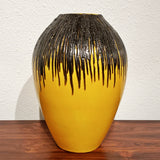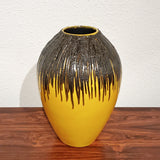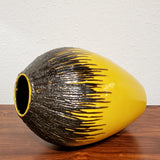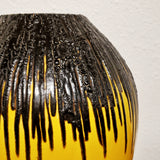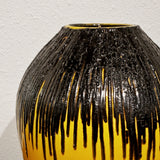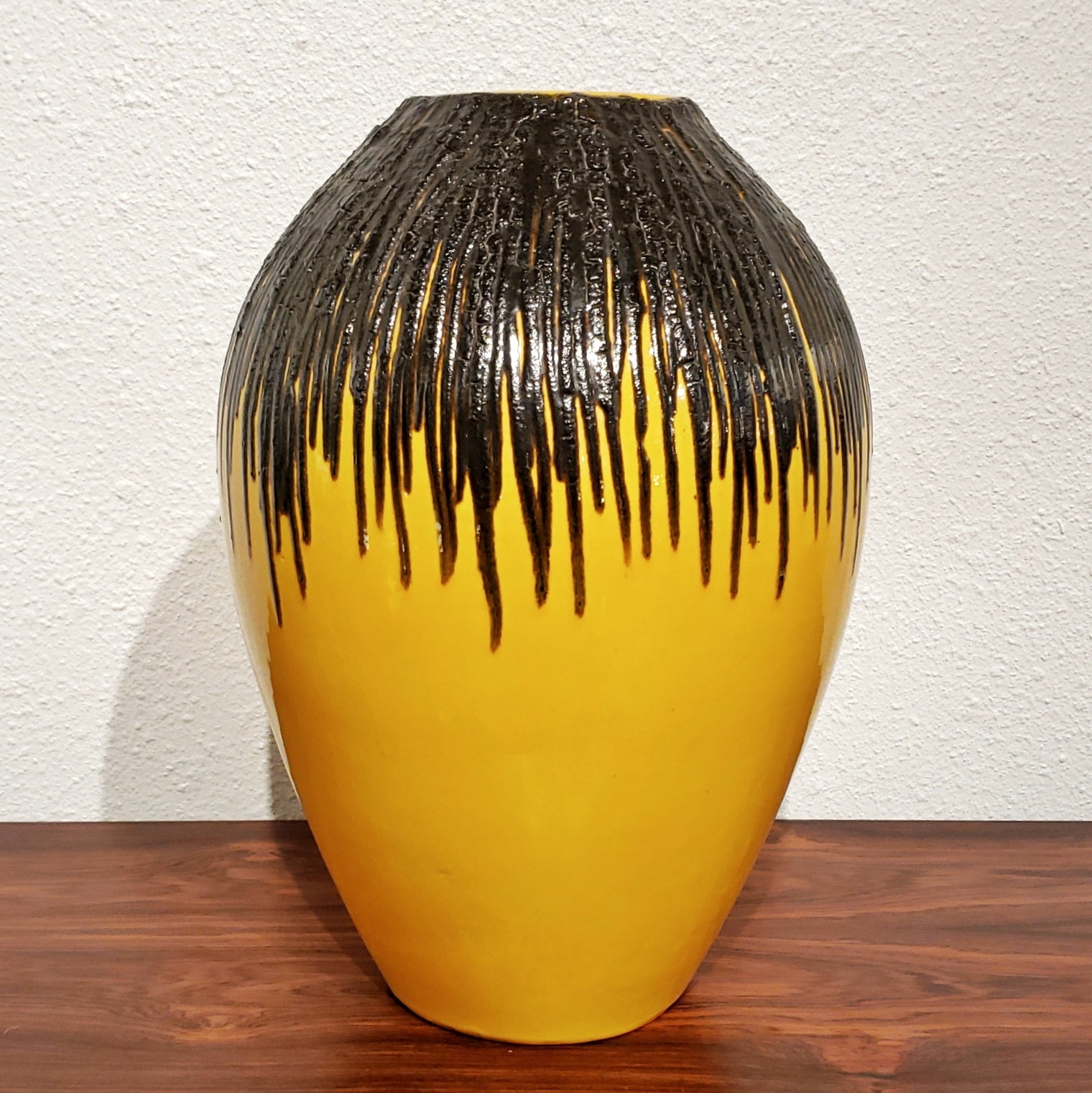
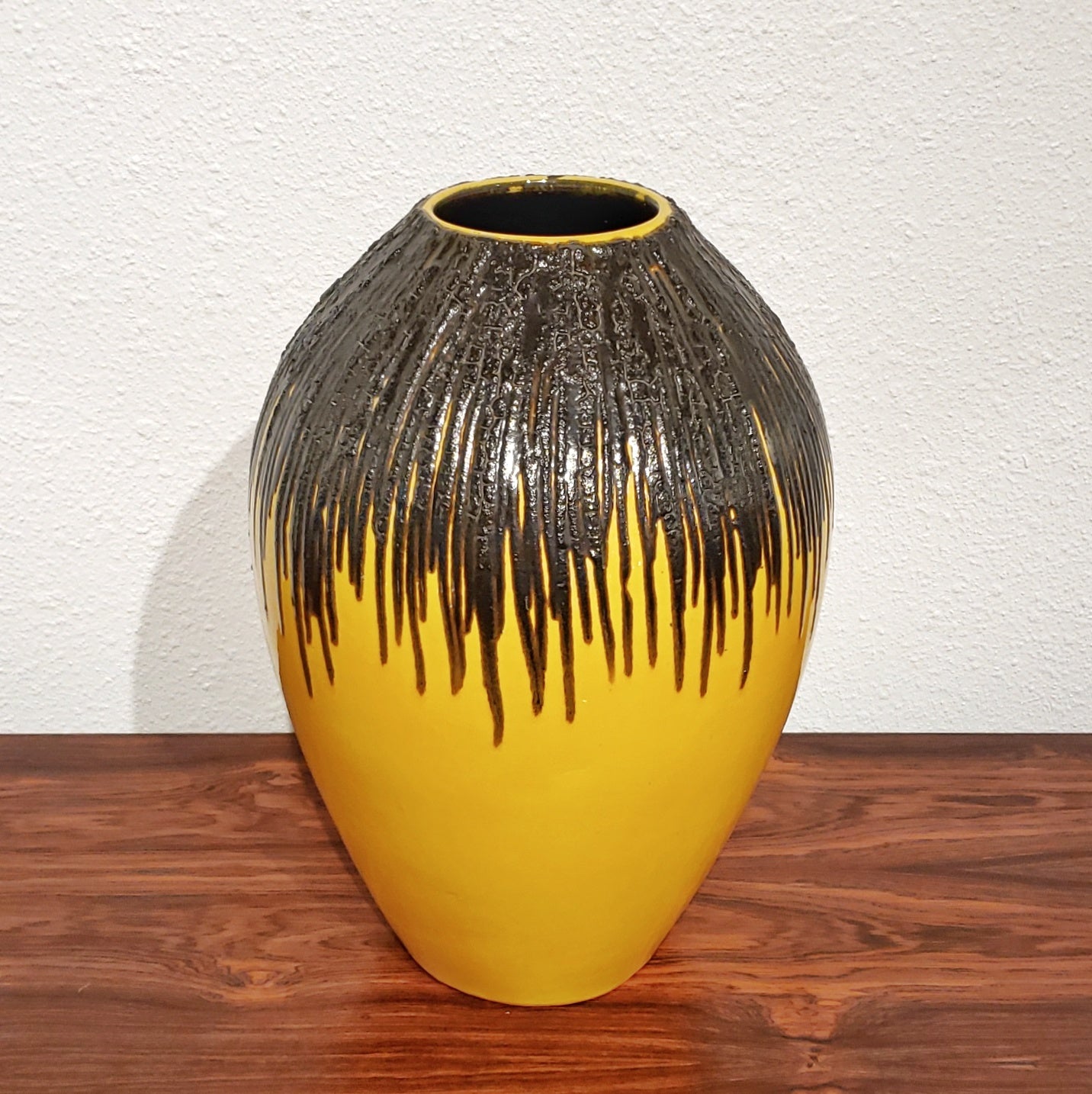
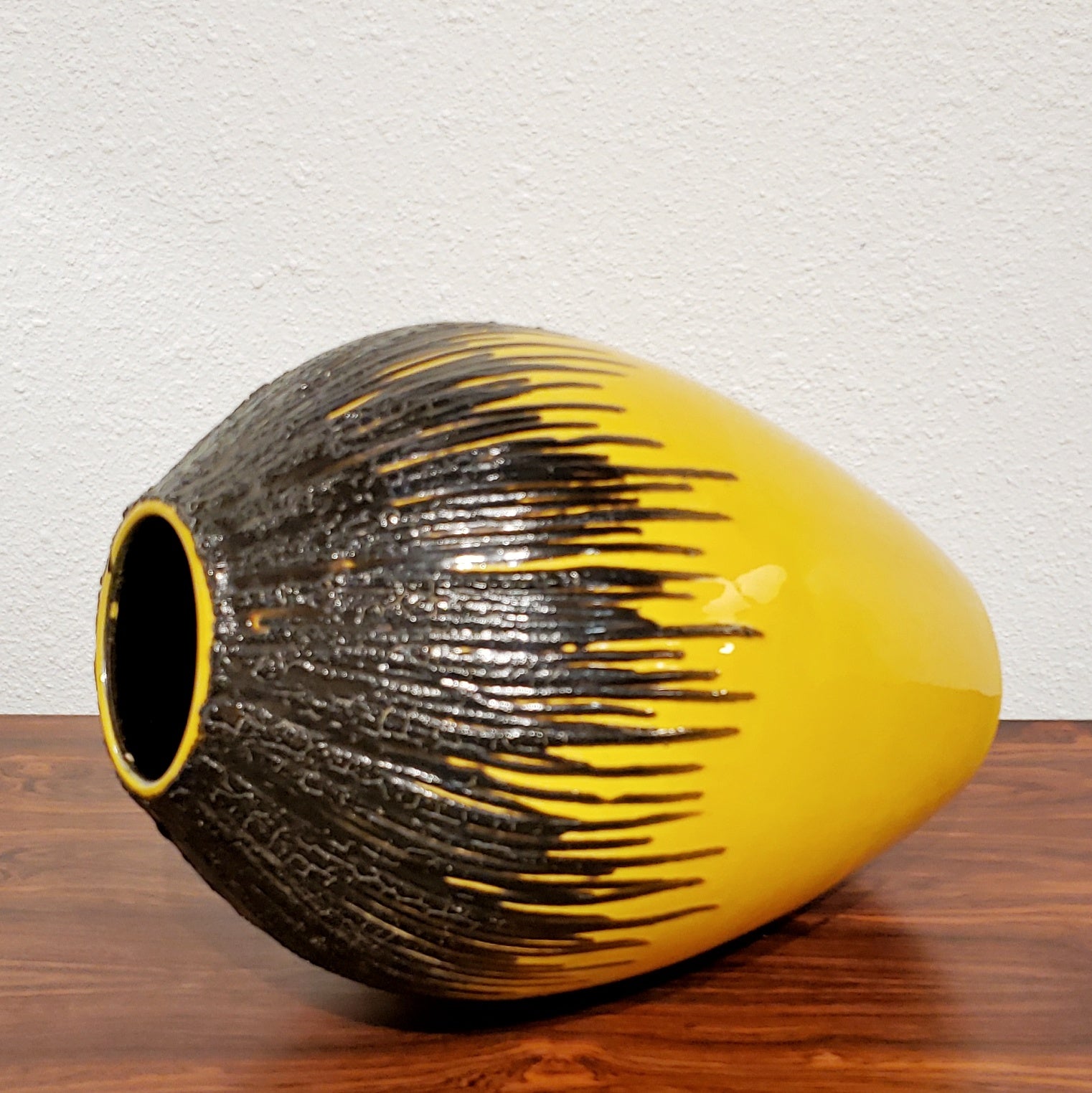
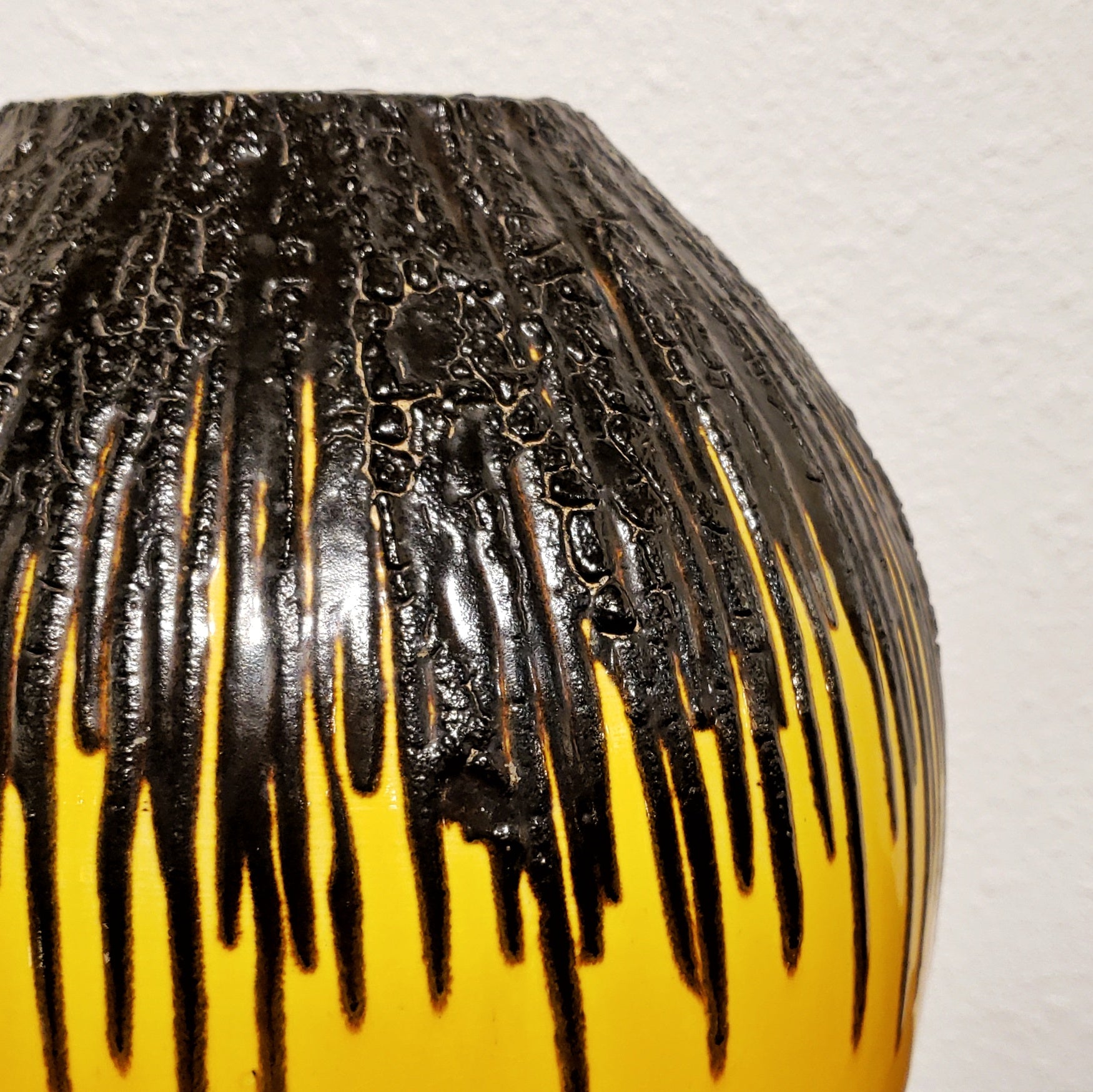
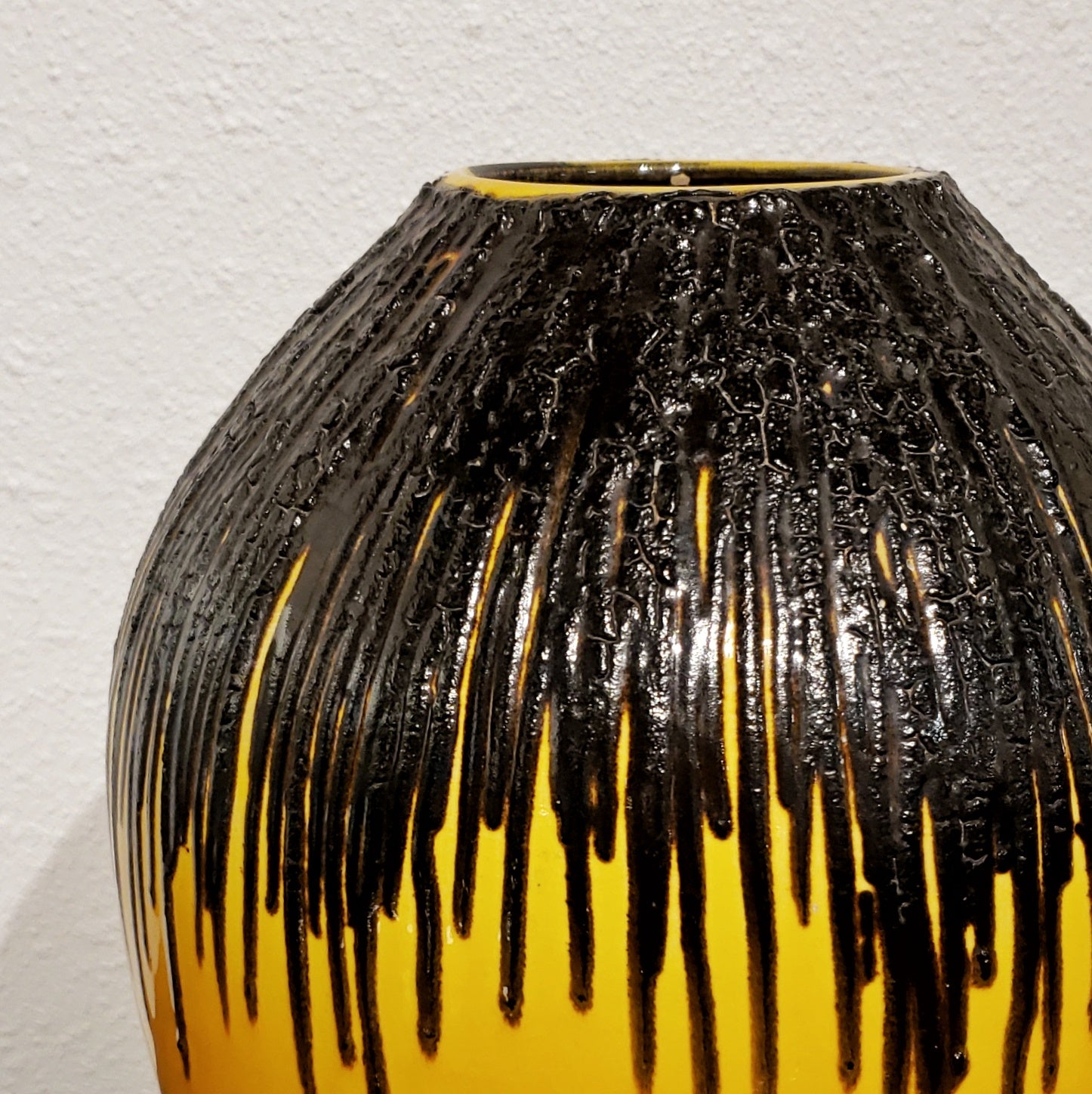
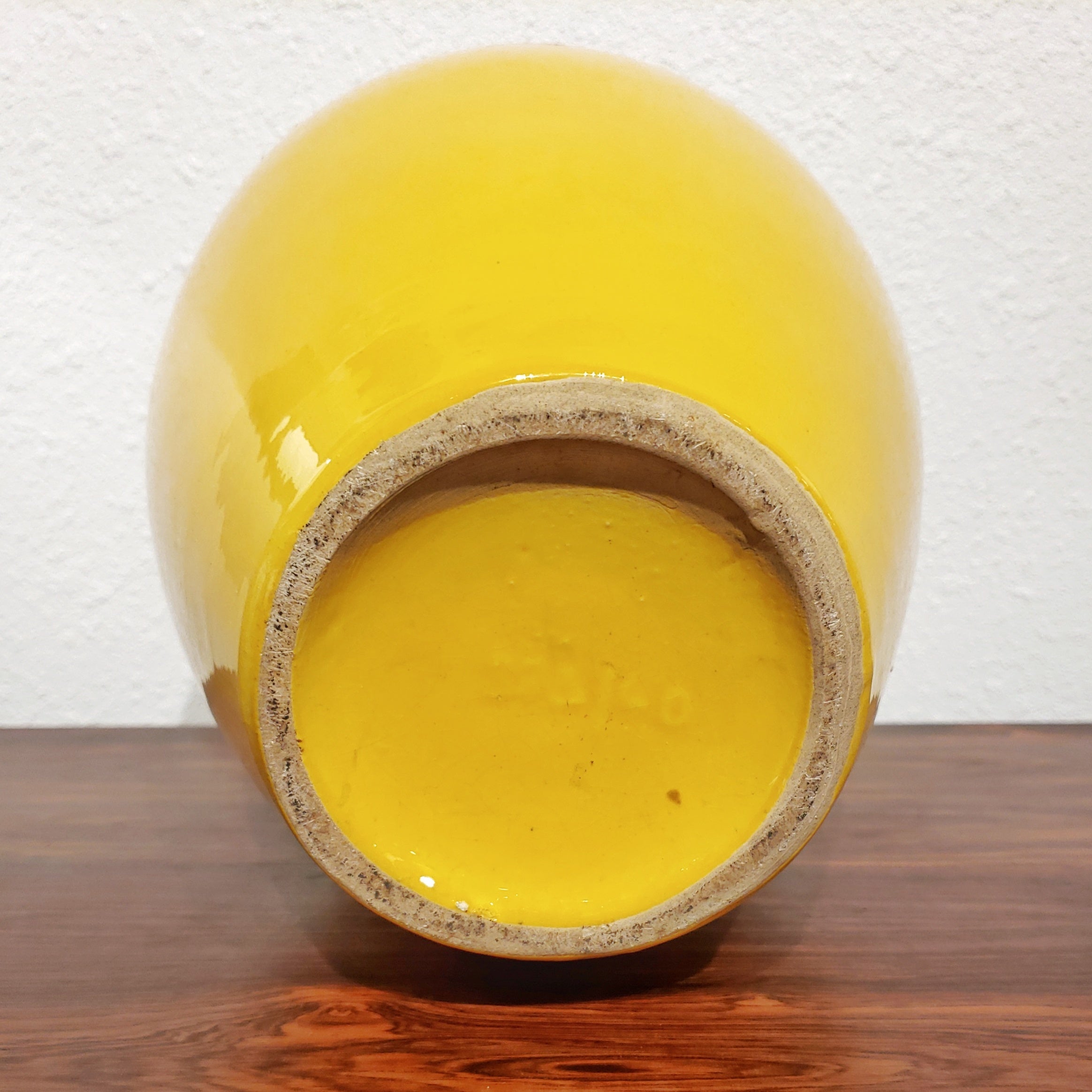
1960s ES KERAMIK FAT LAVA FLOOR VASE 885/40
CONTACT US HERE ABOUT THIS ITEM.
A spectacular ES KERAMIK floor vase in rare cadmium yellow with black, fat-lava streaks dripping down from the mouth. A pristine example for the true connoisseur. Flawless and beautiful.
ES KERAMIK was founded in 1948 by Josef Emons and his two sons—ES being an initialism for Emons & Söhne—in the town of Rheinbach near Bonn in the German state of North Rhine-Westphalia when Emons and then partner Jean Fuss dissolved their terracotta business. (Fuss established Marei Keramik with his son that same year.) Fuss & Emons had been formed in 1921 when the two men left employment with Klein & Schardt, the predecessor of Ruscha Keramik. Its output consisted of flower pots, ornamental ceramics, and eventually drainage pipes. With the start of WWII, production came to a near standstill—with the exception of the inserts for so-called "Hindenburg lichter," an important source of wartime emergency lighting. The full program was resumed as conditions normalized after the war, but the two men chose to go in different directions.
The factory housing ES KERAMIK was largely converted to mechanical production with the company's launch, and its coal stoves were replaced with modern electric kilns. The initial product offering of planters, tubs, pots, and simple vases was soon expanded to include more decorative items. Hans Kraemer joined the firm in 1952 as a senior modeler. He produced all of the shapes for ES KERAMIK until 1968, at the remarkable rate of 15-20 designs per year. The art department was led by Willi Hack from 1954 until the firm's 1974 close. By the second half of the '50s, as many as 18 female painters were employed, among them numerous alumnae of the local glassmaking school. The total workforce topped out at 70 employees.
Sales of ES KERAMIK’s decorative wares were carried out through trade fairs and by territorial representatives. Brochures were never printed, and the company never advertised. The composition of its repertoire was determined solely by feedback from the reps and the current order situation. Successful ES KERAMIK molds and décors would remain in production as long as demand held. The quality of shapes and decorations varied broadly, but the good items were quite good; one of the best is Kraemer's pitcher-form 683, later released as shape number 883.
After the death of Josef Emons senior in 1964, management of ES KERAMIK passed to his sons. The firm's 50th anniversary was celebrated in 1971, and the factory closed its doors three years later. Some technical equipment had previously been sold off to Ruscha Keramik; but the company itself, its premises and the balance of the equipment—as well as the majority of the workforce—were taken over by the senior Emons' former partner, Jean Fuss, and absorbed by neighboring Marei Keramik.
Production Period – 1960-1969
Country of Origin – WEST GERMANY
Maker – ES KERAMIK
Attribution – MARKED
Materials – CERAMIC
Colors – YELLOW, BLACK
Condition – VERY GOOD (no defects; may show slight traces of use)
Height (cm) – 40.0
Diameter (cm) – 24.0

